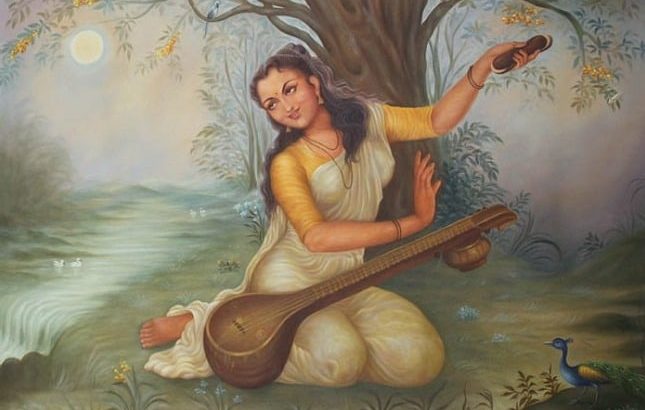
Mirabai: The Making of a Saint Faculty Books
September 21, 2023
Mirabai: The Making of a Saint, the latest publication by Dr. Nancy Martin (Religious Studies), is about an extraordinary and (still) controversial woman—a sixteenth-century, royal devotee of Krishna who refused to live as a woman of her caste and class should. Instead, she sang and danced her impassioned love of God in public, interacting with people of all levels of society, men and women alike, and renounced the privileges of her royal life to live among the poor.
 The Voice of Wilkinson sat down with Dr. Martin to discuss her book and the legend of Mirabai.
The Voice of Wilkinson sat down with Dr. Martin to discuss her book and the legend of Mirabai.
The Voice of Wilkinson: Let’s talk about Mirabai and why you wrote this book.
Nancy Martin: Though she lived some five hundred years ago, and standard historical sources make no mention of her, stories about this revered woman quickly multiplied across social, linguistic, geographic and religious boundaries. This book focuses on these narratives, beginning with earliest hagiographic references where stories about her are included among those of other saintly figures in the growing literature of the sects of devotional Hinduism as well as the Sikh tradition. With the coming of the British, the saint is increasingly drawn into colonial and nationalist debates about women’s independence and education and Indian and Hindu identities, as each tries to draw on her power while also closing down her radicalizing potential.
The final chapters detail key individuals and popular culture representations from the first half of the twentieth century that further shape perceptions of the saint into the present. For Gandhi she is a model for women’s fearless participation in nonviolent resistance, for Rabindranath Tagore for women’s self-emancipation, and for the first modern Hindi female poet, Mahadevi Varma, a socially recognizable precedent for her own independent life as a writer, educator and activist.
VoW: Mirabai is clearly an inspiration (at many levels). Why this book, why now?
NM: I have sought to introduce her and those who have come to love her to a wider audience. It is also the case that a plethora of references continue to be made to her as a representative Indian and Hindu woman of power and presence, and popular accounts of her life and story abound, especially in India, filled with diverse assertions about her. But until now there has not been an extended academic investigation of the full range of narratives about her and the contexts of their emergence. In writing this book I sought to address this lacuna.
VoW: Let’s talk about your travels and research in India.
As someone interested in the study of religion, I found India fascinating as a region where not only the many forms of Hinduism but also Buddhism, Jainism and Sikhism arise and Judaism, Christianity, Islam and Zoroastrianism have also taken root and flourished. I chose to do fieldwork because I wanted to try to understand how religion is lived and to go beyond elite conceptions to listen also to the voices and experiences of women and of marginalized communities. In choosing to go to India and study Hinduism, I wanted to explore how much of another culture and religion I might be able to truly understand.
With respect to the choice to study Mirabai, my interests in the comparative study of religious experience or spirituality, in women’s religious lives, and in narrative converged. The earliest accounts I read about her in English and translations of the songs attributed to her were intriguing but very limited. Even then I was impressed at the possibility of such a strong and courageous woman living in the sixteenth century who was able to find her own voice and insist on living in the world as it should be rather than as she was told it was and must be. So began my three-decade long odyssey to come to know her, who she was and has been for so many across the centuries.
VoW: What do you hope readers will gain from reading this book?
NM: First and foremost those who read this book will learn much about this extraordinary woman and about those for whom she has been such a vital part of their lives and the contexts in which they lived and encountered her. As the subtitle suggests, the book is also about what makes for such a universal and iconic figure. And perhaps readers too might find that Mira’s story speaks to them at some personal level, finding in her a kindred spirit and an inspiration and/or catalyst for self-actualization even as so many spiritual seekers, artists, activists, and countless others have—a way to think about their own lives and to find their own voices, a companion to walk beside them as they navigate what it means to be human and a source of hope and encouragement in their life’s journey.
(Pictured in header: Painting of Mirabai by GR Sharma (https://breathedreamgo.com/mirabai-myth/).

